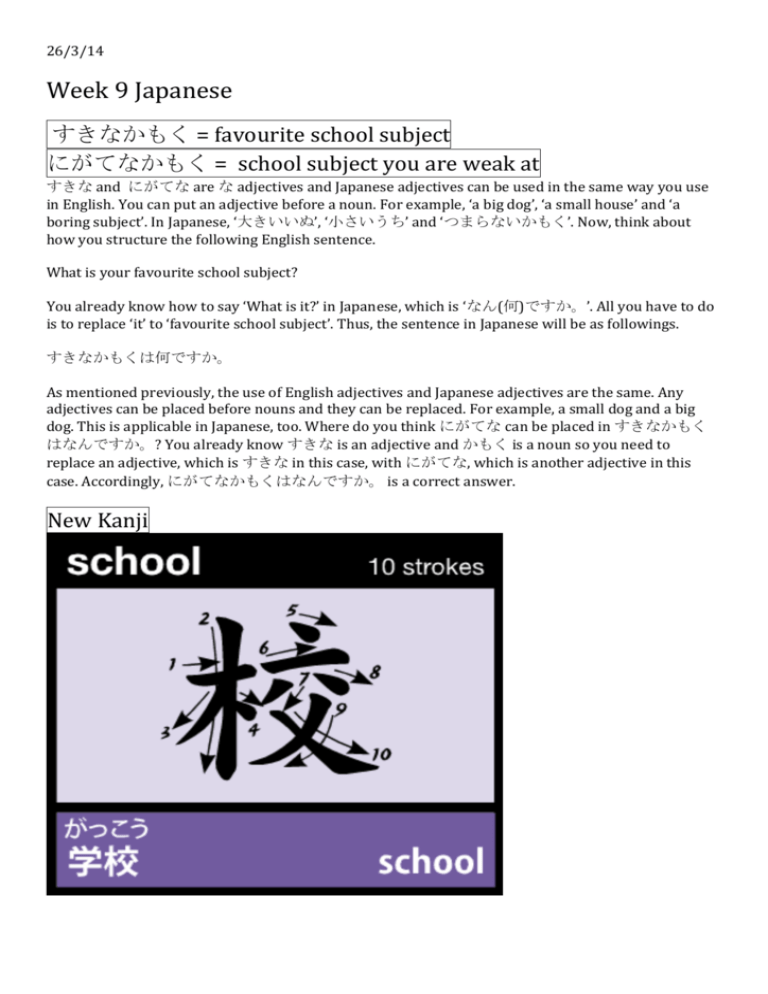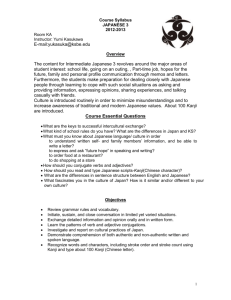26/3/14 Week 9 Japanese すきなかもく = favourite school subject に
advertisement

26/3/14 Week 9 Japanese すきなかもく = favourite school subject にがてなかもく = school subject you are weak at すきな and にがてな are な adjectives and Japanese adjectives can be used in the same way you use in English. You can put an adjective before a noun. For example, ‘a big dog’, ‘a small house’ and ‘a boring subject’. In Japanese, ‘大きいいぬ’, ‘小さいうち’ and ‘つまらないかもく’. Now, think about how you structure the following English sentence. What is your favourite school subject? You already know how to say ‘What is it?’ in Japanese, which is ‘なん(何)ですか。’. All you have to do is to replace ‘it’ to ‘favourite school subject’. Thus, the sentence in Japanese will be as followings. すきなかもくは何ですか。 As mentioned previously, the use of English adjectives and Japanese adjectives are the same. Any adjectives can be placed before nouns and they can be replaced. For example, a small dog and a big dog. This is applicable in Japanese, too. Where do you think にがてな can be placed in すきなかもく はなんですか。? You already know すきな is an adjective and かもく is a noun so you need to replace an adjective, which is すきな in this case, with にがてな, which is another adjective in this case. Accordingly, にがてなかもくはなんですか。 is a correct answer. New Kanji New Reading What month = 月, がつ What day = にち Month in Japanese In Japanese, it is quite easy to say month. What you have to do is to say a number followed by がつ (GATSU written as 月). For example, いちがつ(January), にがつ (February) and さんがつ(March). However, April and September have special readings. April is しがつ and September is くがつ. Dates in Japanese The first ten days of each month, 一日 to 十日, have special readings that originate from a traditional Japanese way of counting. Look at 一日. How is it read? The first day is important as it opens the new month, so it has a special name. Please look at the calendar below and remember the irregular readings. Kanji numbers (一, 二, 三) or Arabic numerals (1, 2, 3) can be used to write days of the month Did you know English months (January December) are originated from Roman Mythology? Birthday = たんじょうび







